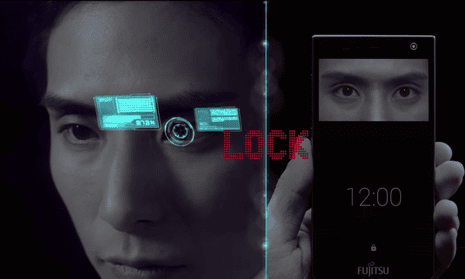Wearables of every shape and size have littered the exhibition halls at Mobile World Congress in Barcelona this year, where 2,000 companies have gathered to show off their wares to a forecast record 90,000-plus visitors this week.
Apple traditionally stays away from the event, giving rivals a chance to get noticed, although the iPhone maker is set to unveil its digital watch on Monday. HTC, Huawei, Samsung and LG have all rushed to release their own wrist-based screens.
Vying for attention with the watches are fitness bands, virtual reality headsets, smart bicycles and so many connected cars that the event is beginning to look like a motor show.
Although both Samsung and HTC chose Barcelona for their annual flagship phone launches, the world’s biggest gathering of all things telephonic has come to be about much more than smartphones. Here are five of the most eye catching innovations.
Unlock your phone just by looking at it
Forget fingerprint scanners – Japan’s Fujitsu has miniaturised iris recognition technology and built it into a prototype smartphone. Recognition takes barely a second, meaning the phone can be unlocked with just a look, and the device can be held at normal viewing distance, not the 10cm required by most iris scanners. While codes and fingerprints work well, the technology means gloves can be kept on in cold weather and firing up the phone with one hand is that little bit easier. The phone itself will be able to register its owner’s iris pattern for the first time, a process which takes 10 seconds, using an LED light that shines into the eye and a small infrared camera. Fujitsu is not a phone maker but hopes to persuade manufacturers, software and app developers to incorporate its invention for commercial release this year.
Cycling tech that sees the cars you can’t
They are better known for making things with four wheels but at Barcelona this year both Ford and Volvo were showing off tech for cyclists.
Ford’s MoDe:Me and MoDe:Pro link to a smartphone that helps riders navigate. The handlebars vibrate when it’s time to turn left or right, allowing riders to keep their eyes on the road.
Volvo has teamed up with fellow Swedish firms Ericsson and POC, which makes helmets. The cyclist is alerted to cars they cannot see, for example when approaching a crossing or when a vehicle is approaching from behind, by their helmet. The warning comes from three small flashing lights below the visor and a vibration behind each ear. The helmet is linked by bluetooth to the cyclist’s smartphone, and the phone is able to download information from the Volvo cloud. Drivers also get a warning if a cyclist is nearby. Both innovations are still at the prototype stage.

The Ikea furniture that charges your phone
Assembling your flat-packed furniture is about to get even more complicated – Ikea has developed bedside tables, desks and lamps with a built-in device that can wirelessly charge your phone. Essentially a flat disc that fits in the surface of the lamp base or tabletop, the charger powers up your phone when you place it on top. There are several wireless charging standards but Ikea’s uses Qi technology, one of the two most popular, which works with more than 80 phones including the forthcoming Samsung Galaxy S6.
The watch that calls you if your child is in trouble
For Star Trek and Knight Rider fans, the idea of a watch that could make phone calls was once a sci-fi dream. Not anymore. After the fright of losing his four-year-old son Filip in a shopping mall, Norwegian entrepreneur Sten Kirkbak has developed a watch that lets children call up to five numbers by pressing a button. On sale for $149 in the US, the FiLIP watch and tracker is coming to Europe shortly through mobile network Telefónica, which owns O2. Brightly coloured and a little bulky, the device also uses Wi-Fi, GPS and mobile masts to track location, so parents can check their child’s whereabouts on a smartphone map. In an emergency, the red button alerts preset numbers with a phone call. Kirkbak claims kids with trackers are left to play outside more often, which means less screen time. Beam me up Scotty!
A phone that defeats the spooks
Snoop-proof devices have become a big talking point, and Geneva-based Silent Circle is blazing a trail in this area. Its first Blackphone was launched at the 2014 Mobile World Congress, and the Blackphone 2 appeared this year, with a faster processor and a 5.5-inch (14cm) screen. It was accompanied by a 7-inch tablet and the latest version of Silent Circle’s operating system. The company’s apps, which also work on Android and Apple phones, allow secure phone calls and text messages, but as yet there is no interception-proof email service. The most paranoid may be reassured by the fact that staff monitor Blackphone production from the factory floor, and it ships in sealed boxes.

Comments (…)
Sign in or create your Guardian account to join the discussion